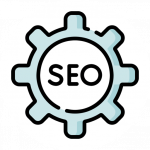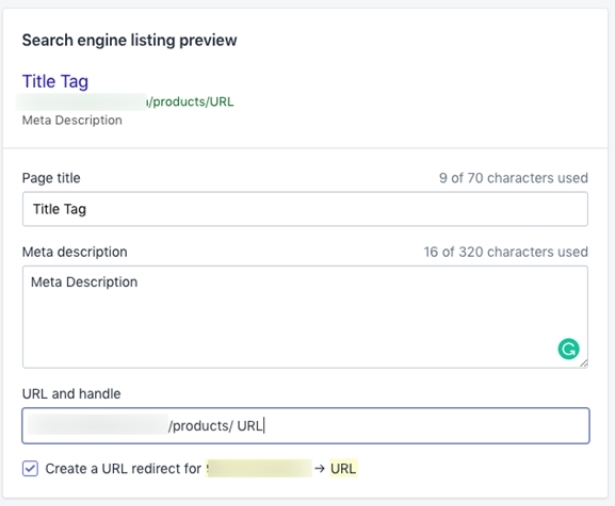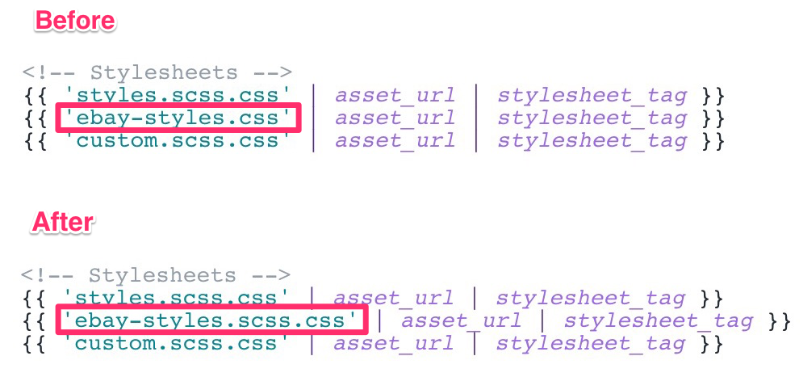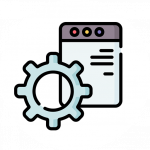Table of Contents
What is SEO?
What is SEO?

SEO is a unique digital marketing technique that allows you to influence the online visibility of a website or relevant web page in a search engine’s unpaid results. The aim is to improve how often visitors to the site or page see positive search results for your keywords and how often these searchers visit your site. This means the closer to the top and more frequently you appear on the search engine results page, the more visitors you’ll receive.
In most cases, being ranked higher in search engine results can help increase sales and revenue. A higher ranking usually means that the page contains more high-quality content, which means that it is more useful to searchers.
SEO helps companies of all sizes better harness and understand online search so they can provide their customers with more relevant information about their products, services, organisations and brands. It can also be used to ensure that organisations are represented correctly online.
Google being the used search engine by a long shot, it’s not the only one. However, no matter which industry you’re in, all websites rely on Google Search to acquire new customers. In fact, in retail e-commerce, around 42% of traffic and 35% of revenue come from organic search results.
SEO differs from local SEO, wherein the latter focuses on optimising a business’s online presence in order to get its web pages displayed by local search engines when a user enters a local-oriented keyword. In essence, it’s about giving people what they want. To do this, you need to make sure that your site includes valuable content and then figure out how to get that content indexed by search engines like Google and Bing.
On-site optimisation involves changing web content production processes to encourage Search Engine Optimisation. This includes altering HTML pages and associated metadata, site architecture and site navigation.
Can we successfully implement SEO on a Shopify website?

Yes! Shopify is entirely SEO-friendly, and you can use it effectively to leverage the digital marketing efforts that provide you with everything you need to start selling online. Your Shopify store has over 150 built-in SEO-friendly features, including editable title tags, meta descriptions, URLs, image alt tags, free SSL certificate, and much more.
So let’s address the hot question- Is Shopify good for SEO?
On a more serious note, it’s no secret that Shopify has some weaknesses in the SEO department. In fact, it is often argued that it’s far from being SEO friendly. That said, you can do a lot to climb up in the rankings and truly optimise your store for SEO purposes.
The best Shopify themes get you 80% of the rankings.
Getting your Shopify store to rank highly on Google is made easy by making some basic optimisations, as well as adding a couple of apps, and you’ll be well on your way to achieving top rankings. Thus, by picking the right app and making various SEO improvements, you’ll soon set your store up for attaining top rankings on Google.
On-page Improvements

On-page SEO involves adjusting your store’s internal pages (but not the homepage) to help search engines categorise, index, and rank them. It’s a set of factors that can improve your search engine ranking. This includes other factors like your code’s quality, text, visual content, and much more.
Let’s understand On-page improvements in detail, which involves going through it from basic to advanced level.
Basic On-Page Improvements
To start with:
Optimise Shopify Page Titles
On the edit product page, enter a title into the field provided. The title will be used as the primary search term to index your product listing, so it’s recommended to include relevant keywords in the title.
By default, Shopify will automatically create a product title based on the name of the product, but that can often lead to problems with over-optimisation (you don’t want to repeat keywords too often) and readability (you want to be able to read your product name without having to click on it).
The first step is to make sure page titles are interesting and catchy. Without an attention-grabbing title, most people tend to avoid reading the rest of the page. But don’t just stick a bunch of keywords in there because Google will penalise you—make sure that it reads naturally and is actually interesting.
Keep it short- Ideally, you want your product titles to be somewhere between 50 and 75 characters long. This gives you enough room for a subject keyword and an appropriate amount of description text for users who may be scanning for information about similar products. It also helps you avoid any issues with over-optimisation.
As a best practice, ensure that you include the product name in your H1 tag. The H1 tag of the particular page is the main headline of a page. It’s not a Shopify SEO setting itself, but it’s critical to ensure that your Shopify SEO title is wrapped within an H1 tag (which will be automatically generated if you’re using Shopify’s default theme). This is simply because search engines treat the H1 tag as one of the main indicators of what the page is about.
Optimise Shopify Meta Descriptions
The meta description on your eCommerce product page is one of the most powerful tools you have for driving traffic and sales. It’s also one of the easiest to optimise for search engines and potential customers alike.
The meta description is a snippet of up to about 155 characters – a tag in HTML – which summarises a page’s content. Search engines show the meta descriptions in search results mostly when the searched-for phrase is within the description, so optimising the meta description is crucial for on-page SEO.
The meta description should convey exactly what visitors will find when they land on your page. Though it is non-visible content, it is an important part of SEO and affects how many people click through from search results. This means that more visitors are likely to be attracted to your website if you write a compelling meta description full of relevant keywords.
Optimise Shopify URLs
The URL structure of your online store can have a significant impact on how you rank in search engines. It’s important to optimise the URL structure of your online store to ensure that both visitors and search engines understand what each web page is about.
You can change the way the URLs look on your Shopify website by entering settings into the URL and handling the settings page.

- Navigate to your Shopify product page.
- Scroll down to the “Search Engine Listing Preview” section as shown below.
- Click on the pencil icon to edit your title and meta description.
- Make any desired edits and click “Update”.
- Click on the “Advanced Options” link to edit your URL as needed and click “Update” again when complete.
Optimise All Images
Shopify’s image editor gives you the ability to crop, rotate and scale your product images. Optimising your images can result in better performance when these images are viewed on a page or shared across social media.
Creating a consistent style for your product images will help customers find your products quicker and increase purchase chances.
In order to install Image Optimiser, you need to have Shopify App Manager installed on your store. Once you have done that, follow these steps:
- Go to your online store
- Click on Apps
- Click on Manage Apps
- Choose Image Optimiser
- Click Install
- Click Activate
Optimise content using the relevant keywords
Optimising your website’s copy to be relevant to the search terms people use to help them find your website/web page is one of the most important aspects of SEO.
Tailoring your Shopify website content to suit your audience will help increase conversion rates and create an overall more positive user experience.
The total number of pages on your Shopify store, and the amount of content you can put on those pages, will vary depending on a variety of factors, but there are some general rules that apply to every eCommerce business.
In addition to headings, meta descriptions, URLs, and image alt tags, it’s essential to optimise all your website content – blog posts, product descriptions, the “about” page, and so on – for primary and secondary keywords. Creating keyword-optimised long-form content such as listicles, articles and how-to guides on a consistent basis will help achieve top rankings on Google.
Advanced On-page Improvements
Let’s understand the full potential of Shopify’s On-page SEO.
Optimise Shopify Page Load Speed
The speed of your website is important for both SEO and conversion optimisation, so it’s crucial to optimise a Shopify store for speed.
Having a fast loading time for your pages is critical to your website’s success. With Google also using site speed as a ranking factor in their algorithm, optimising your Shopify store is becoming increasingly important.
Optimise Shopify Site Structure
Site structure is the foundation of a website, which acts as a base upon which everything is built. If you do it poorly, all your other efforts will be in vain.
Use categories, subcategories, and filters
It’s best to use a limited number of top-level categories (like “Women”, “Men”, etc.) and as many subcategories as you need. This will make shoppers find easily what they are looking for on your website and avoid confusion. Also, it’s easier for Google to crawl your website more efficiently if you have a proper structure.
Use filters
Filters are a great way for shoppers to find products by price or colour. Filters also help search engines understand the different parameters of your products (such as price or colour). Make sure you don’t hide the filters from Google since that would mean hiding them from potential customers as well.
Use a Sitemap Page
A sitemap page is a list of a link representing all your site’s main pages. This helps Google crawlers and other search engines to browse easily through your site and index each page. Using a sitemap generator can save you time when it comes to updating this list of links whenever you add new pages to your site. There are many free tools that allow you to generate the sitemap for your website easily. Your sitemap must be kept updated at all times; otherwise, Google might penalise your store for having misleading information.
Minify CSS
By minifying your CSS, you can reduce the size of your stylesheets, helping to improve the performance of your Shopify store.
Minification removes all unnecessary characters from your code (including white space, line breaks and comments) and can drastically reduce file sizes. The lesser bytes transfer, the quicker pages will load.
While it seems like a small thing, every millisecond counts when it comes to site performance. Users are quick to abandon websites that don’t load quickly enough, so minifying your CSS is just one way you can ensure a smooth user experience and boost on-page SEO.
Shopify automatically minifies your CSS, but not all of your themes use the same suffix. If you’re using a Shopify theme, you can use this tip to auto-minify your own CSS and make it as small as possible.
If you’re using a Shopify theme, you can have it automatically append the ‘scss’ suffix to your CSS files. This will allow you to use SASS for your CSS files and have Shopify automatically optimise the .css files for you!
Shopify will then include these .scss.css files in the <head> of your page for you, instead of including the raw .css file. This saves bytes on every page load.
Steps:
- Navigate to Themes and click on the theme that you would like to edit.
- Click on “Advanced Options.”
- In the “CSS Prefix” text box, enter ‘scss’.
- Click Save
- Create stylesheet.scss file in your theme folder.
- Add SASS code to stylesheet.scss
- In stylesheet.scss, add @import “theme-colours”
- In stylesheet.scss add @import “theme-fonts”
- Click Save


Optimise Images
According to HTTP Archive, 64% of a website’s total page weight comes from images. This means that if you can optimise your images, you can significantly decrease your visitors’ page load speed.
Apart from giving your product images a relevant filename and alt text, you must also ensure the file is small enough to load quickly.
Shopify conducted an experiment where they compared two stores with identical content except for the load speed (one was much faster than the other). The faster loading store had a 37% improvement in conversion rate over the slower loading store!
So the question is- What can you do to optimise images for Shopify?
Well, to start with,
Resize your images to fit your design
If you want to avoid creating multiple versions of the same image, you can use Shopify’s built-in image resizing tool to create resized copies of an image in different sizes. It’s important that you use resized copies of your images instead of adjusting their size in CSS as this will result in slower page loading times.
Reduce the number of images
For every image on your site, an HTTP request needs to be made to retrieve it. The more images on a page, the longer it takes to load these images and render them in the browser. Therefore, it is recommended that you reduce the number of images on a page whenever possible. One way of doing this is by combining multiple images into one larger image or sprite sheet.
Lazy Load Images
Lazy Load is a new Shopify app that automatically adds a delay to your shop page so that images start loading only when they enter the user’s viewport. Instead of having all your product images load at once, lazy loading will show the visitor your featured products first. More images will load in the background as you scroll down on your product page. By doing this, you can make your page load faster and conserve mobile data.
Thus, you need not worry about the pictures loading! Your images will load briskly, and you won’t lose any information. This feature is designed to provide a better user experience and allow you to browse your images quickly.
Verify CSS Syntax to Ensure Automatic CDN Updates
Shopify is a great platform, and it allows you to tap into their CDN (content delivery network) servers so that your store can be delivered quickly across the web. But if you’re not careful, certain CSS syntax can break your theme or even worse, it can break your customer’s checkout experience.
When you enable the Shopify CDN and theme assets that are on a server with an SSL certificate, Shopify automatically updates your store’s theme assets to use secure URLs.
When you make code changes directly to these files, you might break the correct syntax of the file. A broken file prevents your new code from being updated over Shopify’s CDN.
But when you choose to link to a Photoshop file, it becomes static. Every time you change the file in Photoshop, you need to go back to your theme and make that same change. And when the asset is static, Shopify will not recognise it as an update and will not automatically swap out the old version with the new.
Shopify Off-page Improvements

Off-page SEO is everything you can do to get attention from search engines without adjusting anything on your website.
This includes:
- PPC campaigns
- Earning backlinks from other websites
- Getting mentions of your brand in the media
- Social media activity
Improving your off-page SEO involves gaining backlinks from other sites and building a solid social media presence.
There are majorly two ways to conquer the off-page SEO for your Shopify store, and it includes:
Backlink Building
The primary goal of link building is to get other websites to link to yours. If you think about ranking at the top of Google, then links are like votes saying your website deserves to be ranked highly. Getting relevant, authoritative sites to link to yours is one of the most effective ways to increase search traffic and rankings.
But why do links matter to Google?
For starters, the more people who link to your site, the more traffic you’ll get. But there are a few other factors at play.
First, Google sees links as votes of confidence from one site to another. If your website is linked with information about dog training, for example, and a site about cats links to your website, that’s a vote of confidence that you’re an expert in dog training — not cat training.
Second, outbound links from your website are a signal that your content is useful and informative — after all, you’re linking to other useful sites for your readers.
Third, the more authoritative the sites linking to you are, the better. If Harvard University links to you (a sign of high authority), that’s going to carry more weight than a local dog trainer (which would be a low-authority site).
When it comes to ranking on Google, there is no way around A-grade links. They are the indicators of trust that Google uses. Without a proper link building strategy, it will be difficult for your Shopify store to make it to the top of search results.
Here’s what you can do to attract strong traffic to your Shopify store as a part of your marketing strategy:
Guest Posting
Guest posting is a proven way to gain quality backlinks and improve your online brand awareness without compromising the tone and voice of your store.
Guest posting gives you the opportunity to contribute high-quality content to authority websites and publications, which helps you build trust with a new audience and gain a few backlinks. While guest posting won’t directly increase your rankings for target keywords on Google, it does help you to get more traffic from organic searches and referrals through social media.
Promoting Linkable Assets
A linkable asset can be a piece of content (like an infographic, video or an article), a tool, an image or anything that attracts links naturally.
It would help if you promoted a linkable asset using the below strategies:
- Find relevant blogs, forums and social media sites to share your linkable assets.
- Find bloggers who have shared similar resources and ask them for a link.
- Approach journalists who have published articles related to your content and ask for a link
- Promote it on social media sites like Facebook, Twitter, LinkedIn etc.
Link Reclamation and Broken Link Building
Link Reclamation is one of the best off-page SEO activities that you can do for Shopify stores. It involves finding inactive links on other sites that link to your Shopify store, contacting the webmaster and getting them updated and redirected to your Shopify store. Link reclamation is also known as dead link building or broken link building.
Broken Link Building is an off-page SEO activity that helps you build natural backlinks to your Shopify store by using broken links on other websites as leverage to get another website to create a link to your Shopify store.
Earn Brand Mentions and Social Signals
Social media is a great way to spread the word about your new Shopify store. Posting and sharing about your brand will help it get noticed.
The main benefit of social media for Shopify store owners is that it allows you to engage with your audience in real-time. Social media is an excellent place if you want an instant feedback and promote your products or services.
In addition, being active on social media is important for building brand awareness and customer trust. People will link to your product pages when you post about your business on social media channels. Even if that doesn’t directly improve SEO on Shopify, it will lead users to your page.
Common Shopify SEO Issues and Fixes

Search Engine Optimisation (SEO) can be a complex beast. It’s an important part of eCommerce marketing today, but it’s also one of the most overwhelming. Most parts need to come together to get it right, and even then, you might have an uphill battle if you’re competing in a crowded market.
Shopify doesn’t use the same approach to SEO as other websites. While they do have plugins that allow you to optimise the content of your website, you have to go deeper than that. In some ways, Shopify is a little limited compared to other platforms.
But, we aim to address some of the common SEO issues with Shopify that you can fix.
URL Migration Issues
Shopify doesn’t allow you to edit or change any of your URLs once they have been published. If you’ve already published a blog post on your Shopify site and then changed its URL slug, this can be a problem.
If you change the URL slug, the new one will be created, but the old one will remain online. This means that users can access it even though you have a new one with updated content. The search engines will index both, which can lead to duplicate content issues that can affect your site rankings in the SERPs (Search Engine Results Pages).
To avoid this problem, make sure that you never change your URL slugs once they have been set up and published. In case of a mistake, it’s advisable to correct it before publishing the content.
Duplicate Content
One of the most significant mistakes that Shopify store owners make when it comes to SEO is duplicate content. It’s referred to as duplicate content if it’s there on two or more pages on your website with the same information. For example, a product description on multiple pages of a website, which is repeated on multiple pages. It may not be a significant issue, but it can create issues. Search engines like Google punish sites with duplicate content because they want their users to get the best possible experience while surfing on the internet. The result? Low rankings on search results pages (SERPs).
Robots.txt Access N̶o̶t̶ Allowed
There’s a hidden file on your site called robots.txt. It tells search engine robots how to access your content so you can control which pages are crawled and indexed.
The trouble is, if you don’t manage it well, you can inadvertently block your content from being crawled altogether. And if you do it wrong in Shopify, that’s exactly what will happen!
However, Shopify does not allow you to use robots.txt in your store if you have a domain name with www attached to it.
If you want to block pages on your Shopify store from being indexed by search engines, the Robots meta tag must be used instead of the Robots.txt file.
Shopify SEO Checklist

There’s no single “correct” way to do SEO. That said, there are some basic steps you should make sure you’re doing, and they can help you improve your search engine rankings. Follow a list of the best practices, and you’ll be well on your way to building an effective SEO strategy for your online store.
On-page SEO:
- It’s advisable to use one H1 tag on each page
- Write convincing page titles (under 60 characters) and meta descriptions (under 155 characters)
- Optimise URLs
- Set an alt text and descriptive file names for all images
- Create long-form content such as listicles, how-to guides and blog posts
- Optimise with the use of the right keywords
Off-page SEO:
- Build backlinks
- Earn media mentions and social proof
Advanced SEO:
- Submit Sitemap to Google
- Optimise Website structure
- Page Load Speed below 3 seconds
- Responsive design
- Check and remove duplicate content
- Use redirects as and when needed
Optimise your Shopify site structure

Having a solid site structure is important for any type of website, but it’s especially important for eCommerce sites because creating a clean and easy-to-navigate site helps improve user experience (UX). UX is one of the major factors influencing how your customers engage with your website, how long they surf the website and how likely they are to purchase.
Shoppers who are able to find what they’re looking for more easily will stay on your website longer and view more pages. This increased traffic can help you boost your search engine rankings.
So, how can you make your website easier to navigate?
No one wants a website that’s confusing to navigate. Keep things simple so your customers can find products they love.
Create a simple structure with category pages that list the products you want to be featured, and add other pages to organise product details, tools and resources, and anything else you want.
Taking a strategic approach to your Shopify site structure can help customers find the products they need. It also helps search engines discover new web pages and rank them in search results.
SEO experts often overlook your site’s structure, but it is actually extremely important. Search engines need to crawl the entire website and its pages in order to understand what products you have and how they relate to each other.
Let us understand this with the help of an example.

A site structure is simply the way you organise your products. It’s the path you give to shoppers and search engines to navigate your store.
For example, a clothing store owner, you might group your products into categories like men’s, women’s, or kids. From there, each category might have sub-categories like tops or bottoms. And, of course, there would be product pages for each item of clothing.
Visitors to your site are going to love the way you keep products right upfront. Search engines will love how clearly everything is laid out!
Shopify’s layouts and templates are responsive, so they work on any device.
Organising your content with Shopify is easy by using the following structure (Please note: it’s just recommended and may not be required to comply exactly).
Homepage » Category Pages » Sub-Category Page » Product Pages
Don’t forget that your professional brand is built for your customers first. Keep things clean and simple to avoid overloading visitors with too much information.
Use Best Shopify SEO Apps and Tools

While Shopify is a great eCommerce platform, it’s natural to want to differentiate your store from other Shopify sites. We’re confident that the following tools will make a tremendous difference in the performance of your digital store.
SEMrush
SEMrush is an SEO toolkit for digital marketing professionals. Some of its many features include keyword research and backlink analysis, but perhaps the most useful feature for improving SEO is its position tracking capability. This allows you to see where your site ranks for various keywords across multiple search engines like Google, Bing and Yahoo!
The free version of this Shopify app provides daily tracking for up to 10 keywords per domain. The paid version provides unlimited keyword tracking as well as other features like competitor research and website audits.
Google Search Console
Google Search Console is a free tool that lets you monitor and maintain your site’s presence in Google Search results. For example, it can tell you how many people are clicking through to your site from search results. It also shows how often Googlebot crawls your site, which pages are most popular, and which sites link to yours, among many other things.
If your site isn’t appearing in search rankings, this will help you find out why. And if it is appearing but not ranking as highly as you’d like, you can use the tool to improve your SEO efforts.
SEO Image Optimizer
SEO Image Optimizer is a free app that will help optimise your Shopify website images for SEO. The app will automatically generate ALT tags for your product and collection images. You can also generate ALT tags for your blog, pages and custom collection types using a small bit of code.
Shopify SEO Quick tips

Let’s look into a few things you can do to ensure that your store is search engine–friendly.
Shopify Homepage SEO Tips
Enhancing your Shopify homepage SEO is one of the most effective ways of improving your eCommerce site’s search rankings. The homepage is often the first thing newcomers see when they visit a website, so if you can optimise this page to make it more user-friendly, you’ll have more chance of converting those visitors into customers.
While there’s no magic formula for perfect SEO, we’ve put together five tips that will help you get more out of your Shopify homepage. Let’s take a look:
- Select the right homepage title and description.
- Use your most important keyword/s in the URL.
- Link important pages from the homepage
- Include a description and alt text on all images
- Insert a keyword-rich meta description below the title.
Shopify Collection Pages SEO Tips
Shopify collection pages are an important part of any eCommerce store, but they’re often overlooked when it comes to SEO.
Collection pages are usually the second step in a conversion funnel — they’re where customers land after browsing your homepage (the first step) or clicking a link from your blog.
This means that as well as being a key part of your store’s structure for site visitors, Shopify collection pages are also an important element of your SEO strategy.
Here’s how to optimise your collection pages for SEO, and maximise the traffic and conversions these pages can bring in. Let’s dive in!
- Keep collection titles short.
- By customising the tone of your page, you can ensure that you are unique and don’t end up with duplicate content.
- It’s advisable to include long-tail keyword phrases for each and every product on your website’s collection page.
- While keeping the titles short, an ideal best practice would be to go for a detailed description to boost each page and improve its unique score. To keep it clear and crisp, use bullet points.
Shopify Product Page SEO Tips
The product pages on your Shopify store are the most important pages on your site. They’re the pages that sell your products or services, and they’re usually the most visited pages by potential customers. As a result, you need to do everything you can to ensure that they rank as high as possible in Google search results.
- Ensure a clear page structure and hierarchy – use headings, subheadings, and bullets. This will make it easier for the visitors to scan through.
- Don’t write a shoddy product copy—your tone and language matter, not just for sales but for overall brand consistency.
- Add your unique proposition value. This highlights the unique benefits and features of using the particular product.
- Avoid jargon or other lingos that only a certain group of people will understand. Simple, concise sentences are the easiest to read and understand. Avoid passive voice and long sentences, too!
Final Words

SEO (Search Engine Optimisation) is what separates a Shopify website from its competitors. It helps to make your e-commerce business visible to potential customers while also increasing your sales and profits. Utilising Shopify SEO would be highly recommended if you want your eCommerce business to take off.
Now you know how to optimise Shopify. Follow the basic instructions, be as consistent as possible when doing off-page optimisation, and then try some of the more advanced techniques like using structured data, AMP, CDN, and more.
Don’t rush. If you push your website too fast, it won’t get the time it needs to perform well. When it comes to SEO, patience pays off. The same applies to developing a top-notch website – it’ll take some time and patience, but only by doing things right will you see consistent results in return.